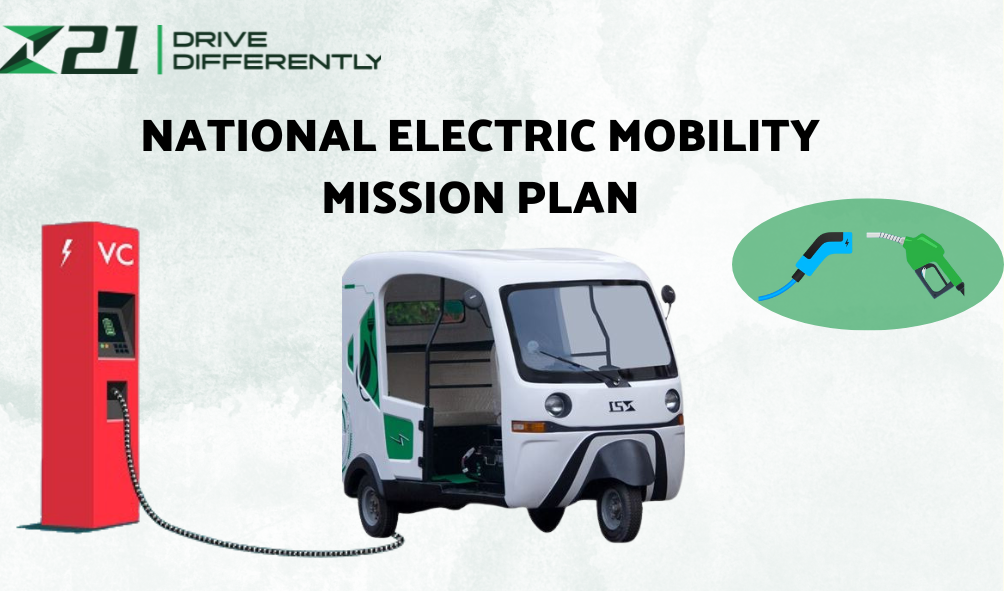The National Electric Mobility Mission Plan (NEMMP) is a perfect example of the way to India’s sustainable transport future. This mission has been initiated by the Government of India with an intention to minimize the use of fossil fuel, control pollution and encourage the use of electric vehicles (EVs). In this guide, you will learn about the objectives of the National Electric Mobility Mission Plan, its outcomes and the changes it brings to the Indian transport sector.
What is the National E Mobility Mission Plan?
National Electric Mobility Mission Plan launched in 2013 is one of the governmental strategies that has been developed to facilitate electric mobility. The mission is an objective to increase fuel security, decrease emissions, and offer environmentally sound transport solutions. With the help of incentives for the purchase of EVs, the Indian government plans to achieve the penetration of 6-7 million electric vehicles by 2025, introducing people to environmentally friendly and energy efficient transport.
Principal Targets of the National E Mobility Mission Plan
The National Electric Mobility Mission Plan outlines several objectives to drive the adoption of electric mobility in India:
- Encourage EV Manufacturing
The mission is to increase local manufacture of EVs through offering incentives to the producers. This goal also entails manufacturing electric cars, buses and two-wheelers to support development of the domestic EV market.
- Increase EV Adoption
Another important goal is to drive more people to switch to EVs with the help of subsidies and tax credits for owners of such cars. The government wants to increase the number of EVs on Indian roads and thereby has made EVs more affordable.
- Minimize the use of Fossil Fuels
India’s overreliance on fossil fuels is one way of polluting the environment and also puts the country at the mercy of global oil price changes. The National Electric Mobility Mission Plan aims at reducing this reliance through promotion of EVs and hence lowering fuel and emissions.
- Build EV Infrastructure
The mission acknowledges the importance of charging infrastructure to be able to meet the proposed EV market share. According to the plan, the network of charging stations will be created to make the use of electric vehicles more realistic for Indian customers.
- Create Job Opportunities
The mission will drive the domestic manufacturing of EVs and the growth of charging infrastructure thus providing new employment opportunities in the green energy and automotive ventures for the growth of India’s economy.
Implication of National E Mobility Mission Plan
Since its launch, the National Electric Mobility Mission Plan has made significant progress in advancing electric mobility in India:
- Increased EV Sales: Subsidies and incentives for the EV have a positive impact for its sales, as electric two wheelers, cars and buses have been demanded by the consumers.
- Growing Charging Infrastructure: Charging stations’ establishment in most cities has therefore made EV ownership viable and thus increased the number of people using electric transport.
- Environmental Benefits: As the use of EVs increases within the country, India is recording less air pollution and green-house gases emissions, hence a healthier environment.
- Economic Growth: Its focus on local manufacturing of the product line has created employment opportunities and played a role in adding to India’s Gross Domestic Product, while consolidating the country as a place of green technology.
The challenges before the National Electric Mobility Mission Plan are as follows:
While the mission has seen success, there are challenges that need to be addressed:
High Upfront Costs
- Nonetheless, even with the government’s subsidies the cost of EVs is still relatively high at purchase. However, bridging this gap with more incentives or different types of financing will help make it easier to increase the number of people who use them.
- Insufficient number of charging stations in the rural regions
The number of charging stations is increasing in urban regions, but rural regions are still inadequate. The charging infrastructure will be of key importance to achieving the goal of deploying EVs across the country; thus, expanding the charging infrastructure to remote areas will be important.
- Battery production and disposal is one of the major challenges affecting the electric cars industry.Another disadvantage of EVs is battery production and disposal which are factors that negatively affect the environment. This issue will be solved by incorporating recycling and green battery technology to help advance the mission’s objectives.
This paper aims at discussing the future of Electric Mobility in India.
The National Electric Mobility Mission Plan forms the roadmap for a cleaner and greener tomorrow by fostering sustainable mobility. Experts believe that with new technology and decrease in the prices of technology, EVs will become popular among the masses. Subsequently, advancements in batteries, charging, and renewable energy are expected to improve electric mobility prospects in India.
The National Electric Mobility Mission Plan is a strategic and ambitious plan that integrates India’s transport system with global sustainable development. In this mission, they have been supporting the adoption of EVs, enhancing the facilities and bringing down emissions that are helping India towards a greener future. For those who are interested in better quality electric cars that are suited for the Indian market and built to help support the future of the country’s sustainable transportation, we have models available at Zero21.


